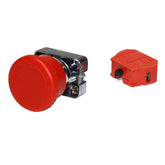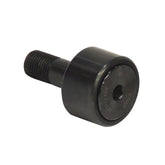Extending the Lifespan of Weather Seals for Hangar Doors: A Comprehensive Guide
Weather seals play a crucial role in maintaining the integrity of hangar doors. They provide protection against the elements and enhance energy efficiency. The longevity of these seals directly impacts the functionality and cost-effectiveness of your hangar operations. In this post, we'll delve into the factors that influence the lifespan of weather seals for hangar doors. We'll also offer valuable insights on how to extend their durability.
Understanding Weather Seals and Their Importance
Weather seals are rubber or elastomeric components installed around the perimeter of hangar doors. They create a tight barrier against external elements such as wind, rain, dust, and even pests. Weather seals don't only safeguard the interior environment. They also contribute to energy efficiency by preventing heat loss or infiltration of cold air. The durability of weather seals is essential to ensure that hangar operations remain smooth and keep maintenance costs in check.
Factors Influencing Weather Seal Lifespan
Material Quality: The quality of the weather seal material is a primary determinant of its lifespan. High-quality materials that are resistant to UV radiation, extreme temperatures, and wear and tear are more likely to endure over time. Invest in weather seals made from durable and weather-resistant materials to maximize their longevity.
Installation Quality: Proper installation is crucial to the lifespan of weather seals. Incorrect installation may lead to premature wear and tear due to stress, uneven pressure, or gaps. Ensure that the seals are installed according to manufacturer guidelines and that they fit snugly against the door frame without unnecessary strain.
Environmental Conditions: The environmental conditions to which the hangar and its doors are exposed significantly impact weather seal lifespan. Extreme weather conditions, such as intense sunlight, heavy rain, extreme temperatures, and corrosive agents, can accelerate the deterioration of seals. Regular inspections and maintenance are essential in such conditions.
Frequency of Use: The frequency of hangar door operation also affects weather seal lifespan. Frequent opening and closing of doors can cause friction and stress on the seals, leading to faster wear. In high-traffic hangars, consider using heavy-duty seals designed to withstand more usage.
Extending the Lifespan of Weather Seals
Regular Inspections: Conduct routine inspections of your hangar doors and weather seals. Look for signs of wear, tear, gaps, or any damage that might compromise the effectiveness of the seals. Address any issues promptly to prevent further deterioration.
Cleaning and Maintenance: Keep the weather seals clean from debris, dirt, and grime. Regular cleaning not only improves their appearance but also prevents the accumulation of substances that can contribute to deterioration.
Lubrication: Use appropriate lubricants on the seals to prevent them from drying out, cracking, or becoming brittle. Lubrication helps maintain the seals' flexibility and resilience.
Repairs and Replacement: When signs of significant wear or damage are noticed, address them immediately. Minor repairs can extend the lifespan of seals, but if the damage is extensive, consider replacing the seals to ensure continued protection and efficiency.
The lifespan of weather seals for hangar doors depends on a combination of factors, including material quality, installation, environmental conditions, and usage. By choosing high-quality materials, ensuring proper installation, and conducting regular inspections and maintenance, you can significantly extend the lifespan of these critical components. Investing time and effort in preserving the functionality of weather seals ultimately contributes to the smooth operation, energy efficiency, and overall cost-effectiveness of your hangar operations.
Upgrade your hangar's efficiency and protection with our premium hangar door parts, ensuring reliable performance and longevity!





